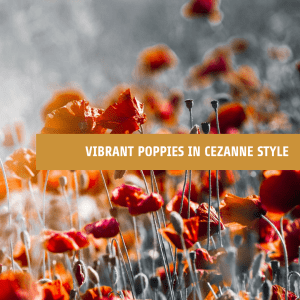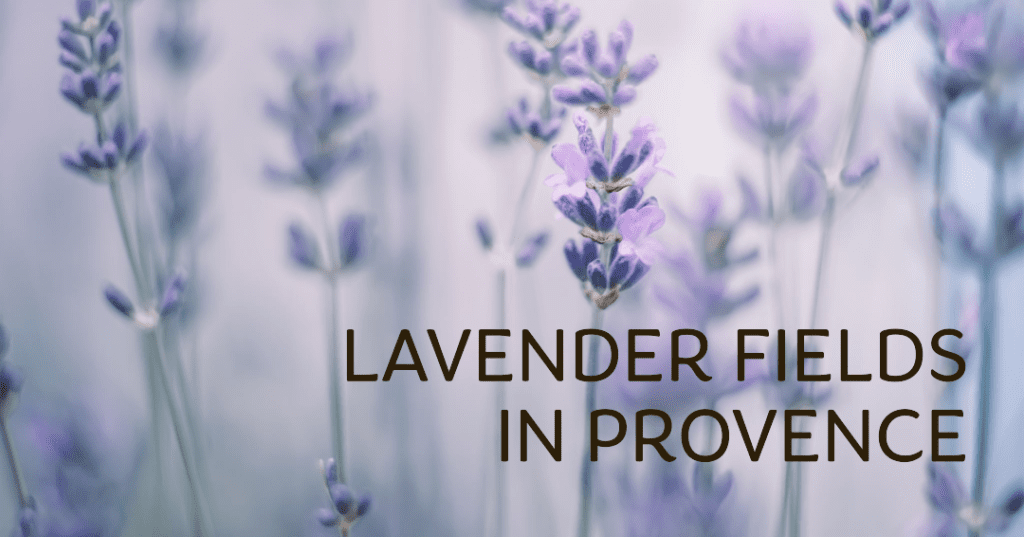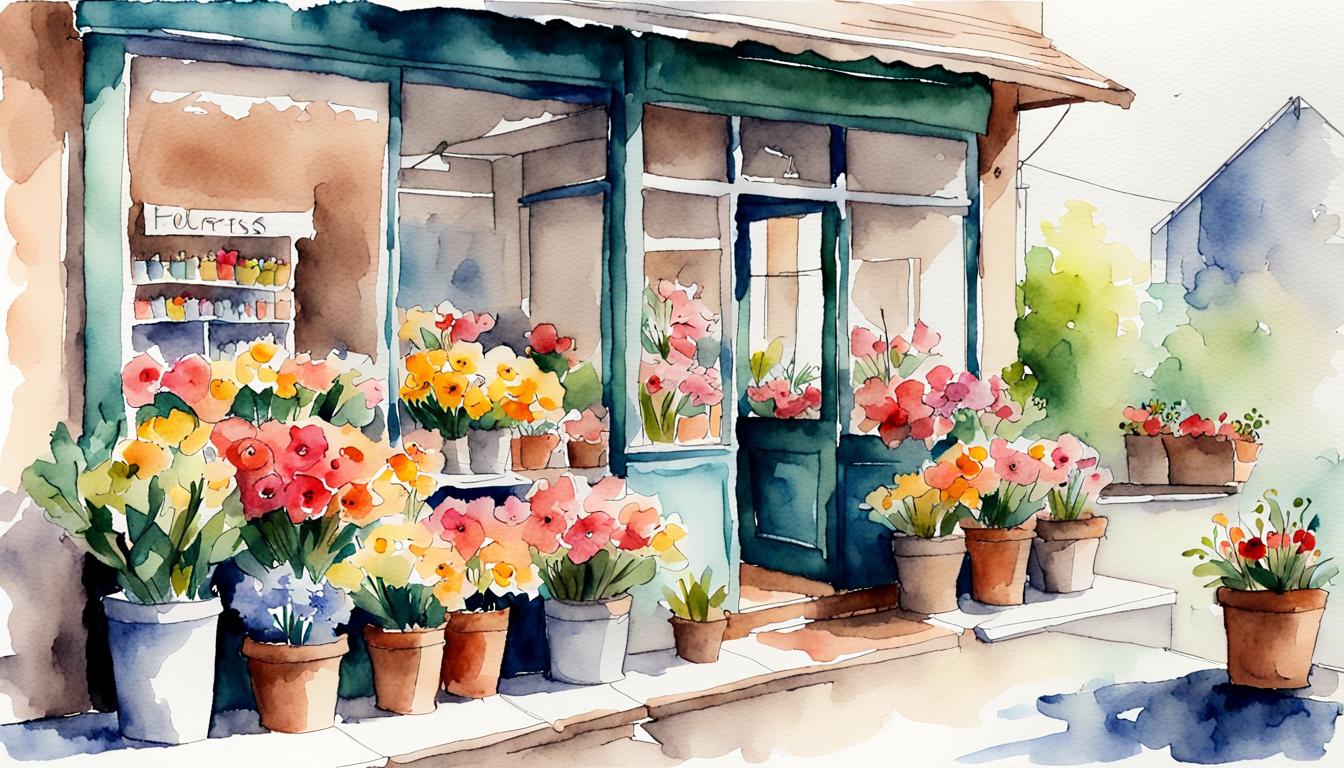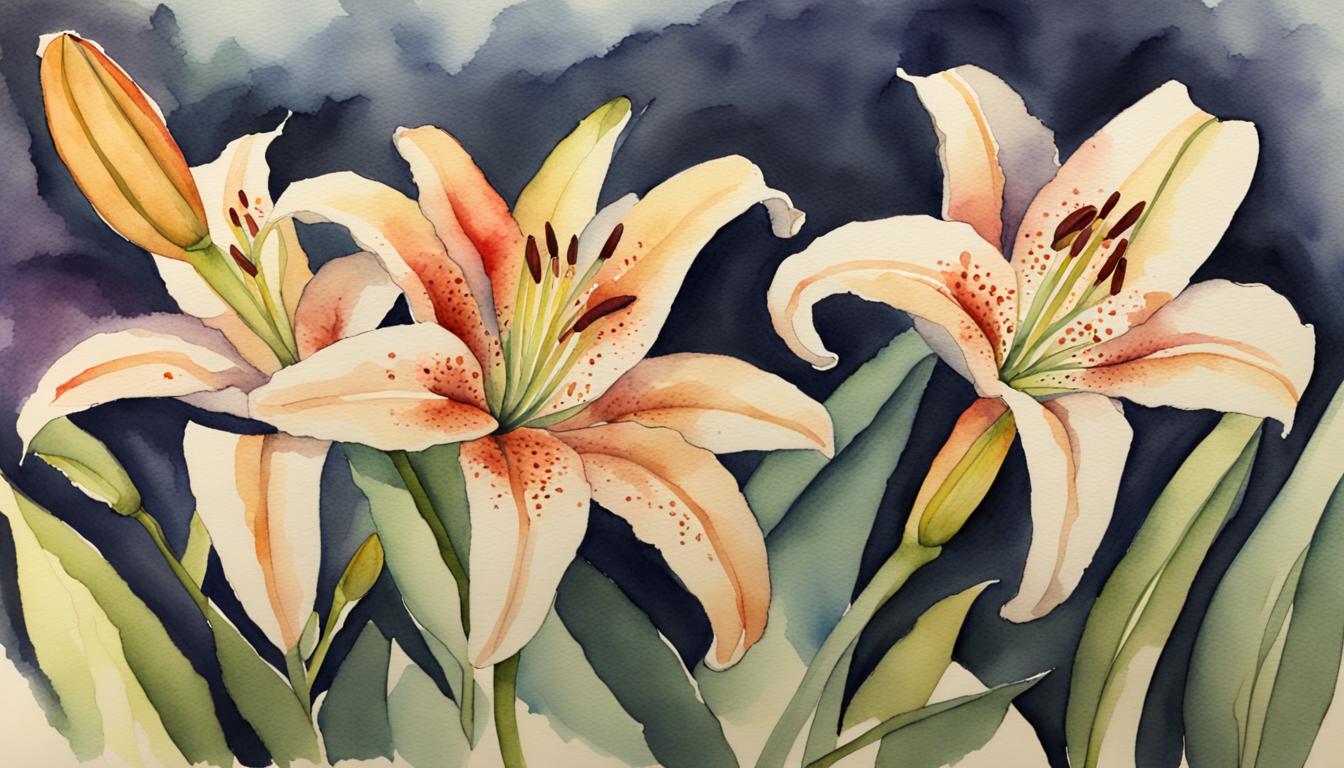
The delicate art of flower watercolor painting brings to life the ephemeral beauty of nature with stunning hues and intricate details. Rooted in history, this artistic form has evolved into a beloved technique that continues to captivate artists and enthusiasts alike. In this blog, we will explore the world of flower watercolor painting, offering insights into essential materials, techniques, and the joy of creating floral art.
Essential Materials for Flower Watercolor Painting
Flower watercolor painting demands top-tier materials to bring the brilliance of botanicals to the forefront. High-quality watercolor paints with a wide range of pigments ensure vibrant and lifelike colors. Specially designed watercolor paper and surfaces are crucial for achieving the desired effects, while various watercolor brushes – like rounds, flats, and liners – grant artists unparalleled control over their strokes. In addition, certain tools and accessories can enhance the painting process, such as masking fluid for preserving white spaces or a mister for subtle textural elements.
Selecting the Right Flowers for Painting
Choosing the perfect flower subject is an essential aspect of watercolor painting. Picking inspiring flowers that resonate with the artist’s emotions and aesthetics ensures a more profound connection with the artwork. Understanding color theory is equally crucial, as it enables the artist to create harmonious and visually appealing floral arrangements, even in the absence of a natural color scheme.
Setting Up Your Workspace
A well-organized workspace sets the stage for a successful painting session. Properly arranging all materials within reach ensures smooth workflow and minimal interruptions. Adequate lighting is also indispensable for accurately perceiving colors and achieving the desired tonal values in the painting.
Basic Watercolor Techniques for Flowers
To achieve various effects in flower watercolor painting, mastering essential techniques is paramount. The wet-on-dry technique allows the artist to create precise lines and controlled strokes. On the other hand, the wet-on-wet technique promotes seamless blending and soft edges, ideal for creating gentle transitions in petals and leaves. Layering and glazing techniques lend depth and dimension to the artwork while experimenting with textures and effects adds flair to the final composition.
Preparing Your Watercolor Palette
The process of preparing a watercolor palette involves skillfully mixing and blending colors to create a wide spectrum of shades and tones. With a profound understanding of color mixing, artists can create captivating floral art with harmonious and complementary color combinations.
Sketching the Flowers

Before painting begins, a pencil sketch provides a solid foundation for the artwork. It helps artists plan the composition, ensuring proper placement and proportion of the flowers on the paper.
Understanding Light and Shadows in Floral Painting
Comprehending light and shadows is crucial for adding realism and depth to watercolor floral art. Identifying the primary light source in the composition is essential, as it determines the direction and intensity of the shadows. Skillfully incorporating shadows can add a three-dimensional quality to the artwork.
Painting Different Types of Flowers
Different types of flowers demand varied painting techniques to capture their unique characteristics. For petal-rich flowers like roses, precise and detailed brushwork is essential to depict their intricate beauty. Conversely, lilies and orchids, with their elegant and graceful appearance, require more flowing and expressive brushstrokes. Sunflowers and daisies, bold and vibrant blooms, necessitate a bolder color palette and distinct textural elements.

Adding Backgrounds and Context
Backgrounds are essential elements that provide context to the floral artwork. Simple washes can create an atmospheric backdrop that enhances the focus on the flowers. Additionally, incorporating natural elements like leaves stems, or other relevant objects elevate the overall composition.
Emphasizing Details and Highlights
Refining details and highlighting specific features adds depth and personality to the floral painting. Fine lines and intricate details capture the essence of each flower, while strategically using white space allows certain elements to sparkle and catch the viewer’s eye.
Incorporating Mixed Media Techniques
To add a unique touch to floral art, artists can experiment with mixed media techniques. Adding ink or pen outlines to the watercolor work creates a distinctive and eye-catching effect. Furthermore, incorporating salt or alcohol can produce fascinating textures that add intrigue to the final piece.
Dealing with Mistakes and Corrections
Mistakes are an inherent part of any artistic process. Embracing imperfections and viewing them as opportunities for growth is crucial for artists to develop their skills. Various techniques exist to salvage a painting when mistakes occur, ensuring that setbacks do not discourage the artist’s creativity.
Framing and Displaying Your Watercolor Flower Art
Properly framing and displaying watercolor floral art elevates its visual impact. Selecting the right frame complements the artwork and enhances its overall presentation. Correctly mounting the artwork ensures it remains intact and protected for years to come.
Exploring Different Floral Painting Styles
Flower watercolor painting offers a broad range of stylistic choices. Artists can opt for realistic representations, capturing the finest details of flowers with meticulous precision. Alternatively, embracing a loose and expressive style allows for a more spontaneous and interpretative approach, creating evocative and emotionally charged artworks.
Finding Inspiration and Developing Your Style
Seeking inspiration from accomplished watercolorists and fellow artists fosters growth and development. Learning from others’ techniques and styles can inspire personal growth and innovation. Keeping a floral painting journal also allows artists to track their progress and document their creative journey.
Famous watercolor flower paintings for inspiration
| Artist | Title | Description | Gallery |
|---|---|---|---|
| Claude Monet | Water Lilies | A series of paintings by Claude Monet depicting water lilies in his garden at Giverny. The paintings are known for their fluid brushwork and use of light and color. | Musée de l’Orangerie, Paris |
| Vincent van Gogh | Irises | A painting of irises in a vase, created by Vincent van Gogh in 1889. The painting is known for its vibrant colors and swirling brushstrokes. | Van Gogh Museum, Amsterdam |
| Georgia O’Keeffe | Red Poppy | A painting of a red poppy, created by Georgia O’Keeffe in 1927. The painting is known for its large scale and close-up view of the flower. | Museum of Modern Art, New York City |
| Henri Matisse | Flowers | A painting of flowers in a vase, created by Henri Matisse in 1907. The painting is known for its bold colors and simplified forms. | Museum of Modern Art, New York City |
| Piet Mondrian | Amaryllis | A painting of an amaryllis, created by Piet Mondrian in 1910. The painting is known for its geometric shapes and limited color palette. | Gemeentemuseum Den Haag, The Hague |
| Andy Warhol | Flowers | A series of paintings of flowers, created by Andy Warhol in 1964. The paintings are known for their bold colors and repetitive patterns. | Museum of Modern Art, New York City |
| Yayoi Kusama | Ready to Blossom in the Morning | A painting of a field of flowers, created by Yayoi Kusama in 1989. The painting is known for its use of polka dots and its dreamlike atmosphere. | Museum of Modern Art, New York City |
| Gustav Klimt | Bauerngarten | A painting of a wildflower garden, created by Gustav Klimt in 1907. The painting is known for its rich colors and decorative patterns. | Österreichische Galerie Belvedere, Vienna |
| Rachel Ruysch | Vase of Flowers | A painting of a vase of flowers, created by Rachel Ruysch in 1699. The painting is known for its detailed depiction of the flowers and its use of light and shadow. | Mauritshuis, The Hague |
Participating in Watercolor Challenges and Contests
Engaging with art communities and participating in watercolor challenges and contests nurtures artistic confidence and provides exposure. Collaborating with fellow artists fosters a sense of camaraderie, and winning or receiving recognition in contests can be a great boost to an artist’s self-esteem.
Preserving and Caring for Your Watercolor Art
Preservation is vital to ensure the longevity of watercolor art. Proper storage and handling techniques prevent damage while protecting the artwork from excessive exposure to light and humidity preserving its vibrancy and colors.
Flower Watercolor Painting as a Therapeutic Activity
Beyond being a creative outlet, flower watercolor painting can serve as a therapeutic activity. The process of engaging with art can relieve stress, promote relaxation, and provide an escape from daily pressures. Immersing oneself in the beauty of nature through painting flowers fosters a deep connection with the environment and the self.
Conclusion: The Timeless Beauty of Watercolor Floral Art
In conclusion, flower watercolor painting offers artists an opportunity to capture the fleeting beauty of nature with breathtaking precision and emotion. The careful selection of materials, understanding of various techniques, and the exploration of personal style can help artists create captivating floral artworks that stand the test of time. Through this enchanting artistic journey, artists connect with nature, emotions, and their inner creativity, leaving an indelible mark on the canvas and in the hearts of those who behold their masterpieces.

